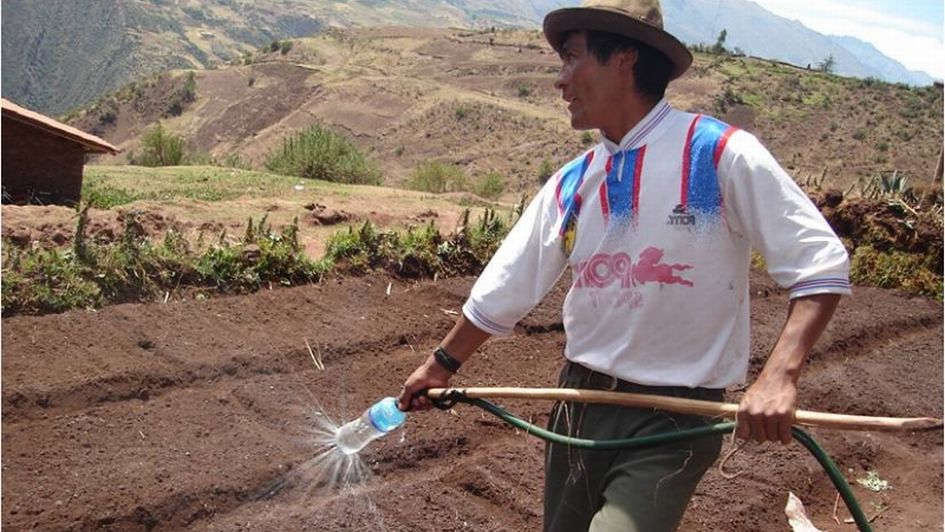Project closed | Project period: 2011–2013
Sierra Productiva
From subsistence farming to cooperative farming

The rural areas of Cusco, Ica, and La Libertad are among the most underdeveloped regions in Peru. Much of the indigenous population lives in abject poverty. The initiative Sierra Productiva combined age-old knowledge in this cultural area with new findings, helping small farmers develop a stable subsistence economy while opening up opportunities for cooperative farming.
Working area:
Development cooperation
Region/Country:
Peru
Project period:
2011–2013 (closed)
ProjectTechnologies and application ideas for small farmers
The program consisted of 18 simple but effective technologies along with ideas for their application – from irrigation and land management to energy supply – all developed and implemented in collaboration with the farmers. The result was an increase in agricultural yields. The program also developed strategies for processing and marketing the products grown on the farmers’ small landholdings and initiated partnerships.
Sierra Productiva was conceived by the Instituto para una Alternativa Agraria (IAA) and has been implemented since 2011 in collaboration with partners including Siemens Stiftung, which focused primarily on the areas of water and renewable energies. Nearly 500 families participated in the project.
IdeaEcological, economic and social approach for small farmers
Despite positive economic development in recent years, a substantial social imbalance still prevails in Peru. While poverty has decreased significantly in cities, over half of those living in rural areas have no access to public healthcare or a safe water supply and still live in poverty. The indigenous population, in particular, is largely excluded from economic growth.
In the Sierra Productiva project, whose name means “productive Andean highlands,” Siemens Stiftung and the Instituto para una Alternativa Agraria (IAA) helped small farmers in the poorest regions of Peru implement 18 simple technical innovations to improve their situation, taking environmental, economic, and social aspects into account.
Development steps of the project
- 18 innovations for strengthening small-scale agricultural production Over a period of three years, small-scale farmers received assistance in implementing 18 different development steps, for example, in the areas of irrigation, energy supply, and agriculture. Traditional knowledge from their own culture was combined with new findings. The approach increased agricultural yield and allowed the farmers to supplement their income by bringing their products to market.
- Water and energy were the focus of Siemens Stiftung Siemens Stiftung focused primarily on water and energy – areas in which the foundation had already gained valuable experience in other regions. Specifically, we helped the local population with irrigation, optimizing cooking facilities through the use of solar technology, producing safe drinking water, and installing bio-generators. We offered simple technical solutions that made a major difference when used correctly.
- Developing ecological districts Varying landscape conditions are taken into consideration. The long-term goal was to develop so-called “ecological districts,” which focus on the environmentally sustainable use of resources.
- Personal contributions and joint responsibility The involvement of the families was particularly important. Passing on acquired knowledge to others was particularly important. Local multipliers known as “Yachachiq” (a Quechua word for “those who know”) played a central role in implementing the technical innovations.
The Sierra Productiva approach has been replicated in other remote communities outside the Andean Highlands of Peru. It showed how the principle of “learning from and with one another” with a view to the specific cultural environment can pave the way for inclusion by boosting social and economic development.



